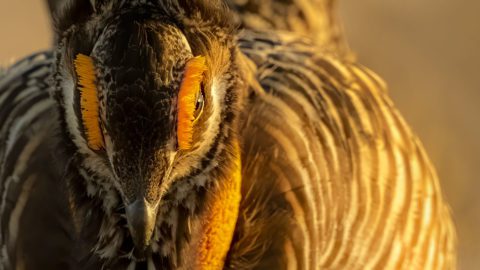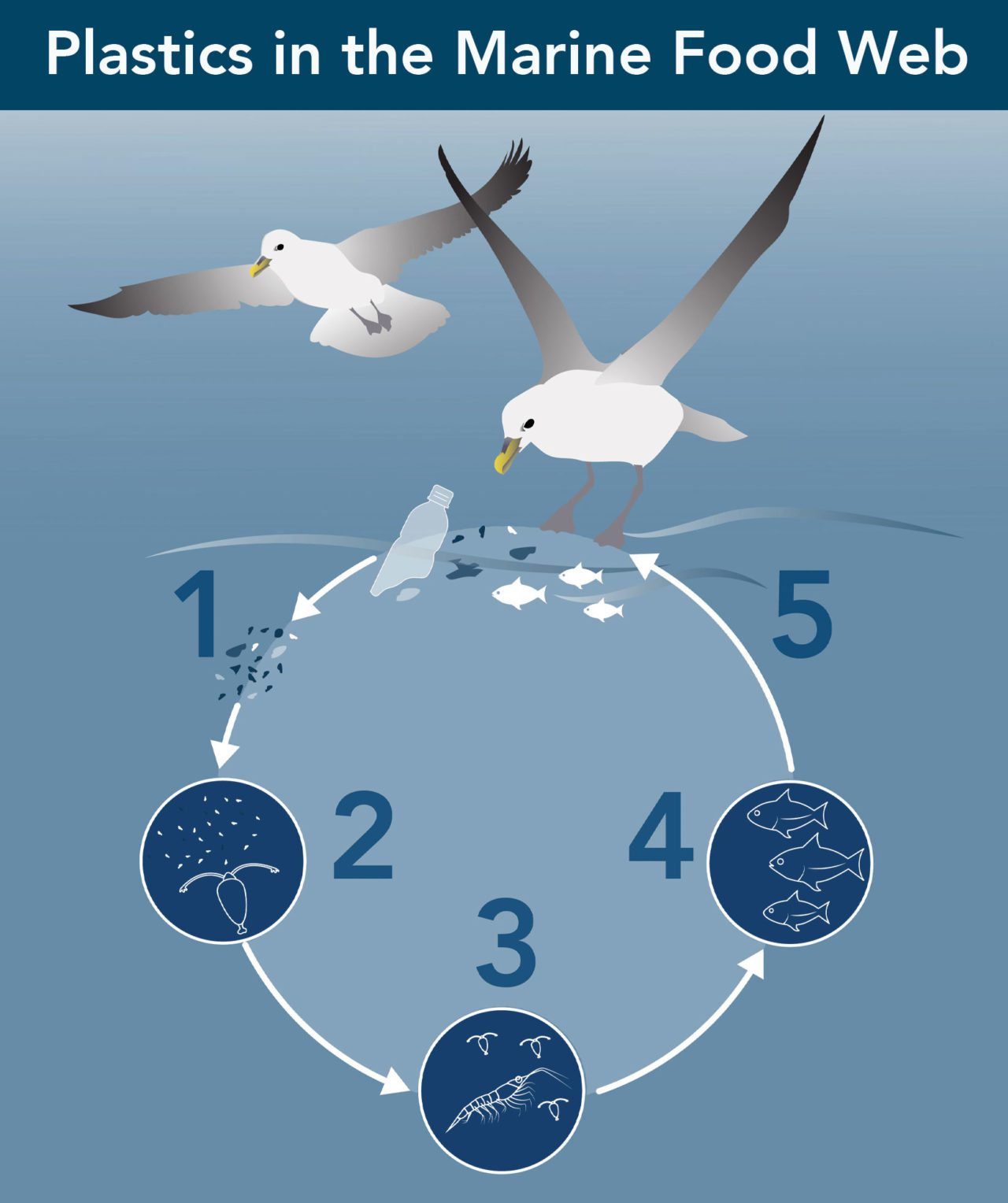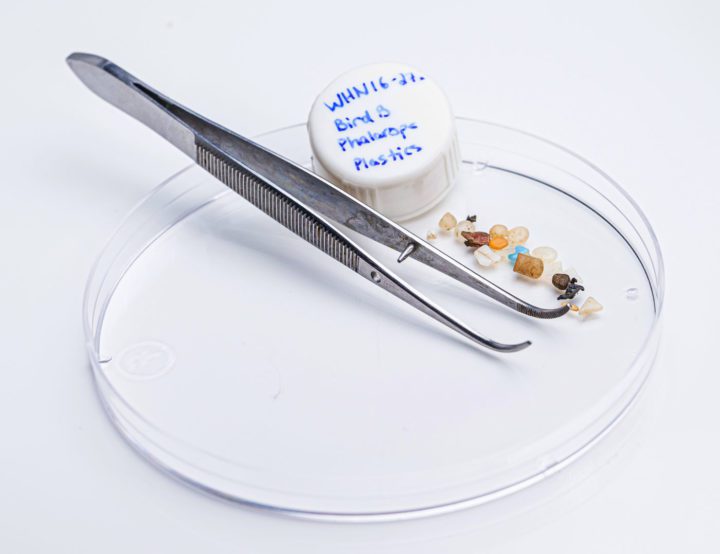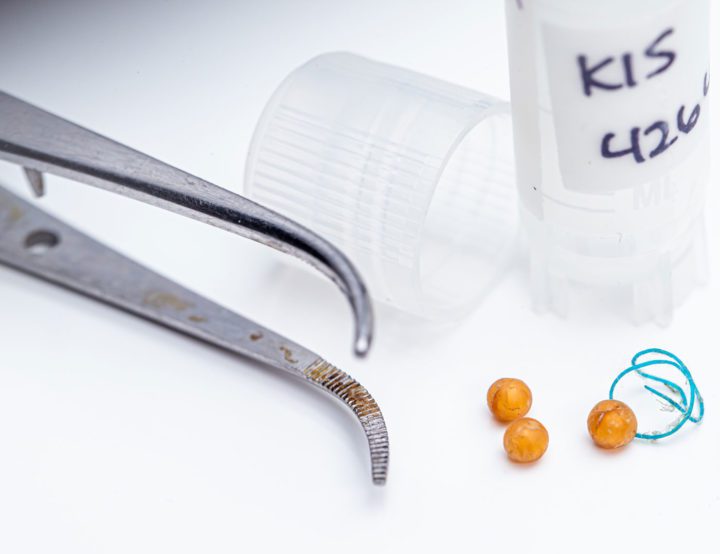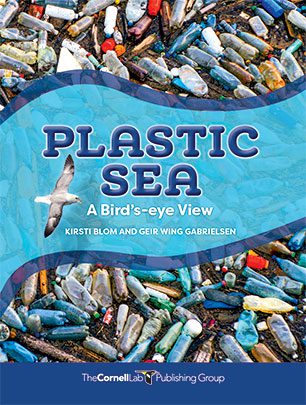A Hardy Seabird Is Helping to Detect Plastic Pollution in the Arctic
By Abby McBride
Northern Fulmar by Nigel Voaden/Macaulay Library. March 30, 2020From the Spring 2020 issue of Living Bird magazine. Subscribe now.
As you read this story, the ghostly forms of Northern Fulmars are gliding above icy ocean waters all around the top of the Northern Hemisphere, uttering creaky calls, maneuvering on stiff wings, snatching prey from the sea—and collecting vital data.
The stocky, gray-white seabird—a petrel in gull’s clothing—has been helping scientists understand global pollution patterns of plastic, a contaminant so ubiquitous that it’s piling up in places as far-flung as the high Arctic.
Fulmars glean this data in a troubling manner: one piece of plastic at a time. But these are hardy birds, able to live out their lives with plastic cargo in their bellies. And their unfortunate eating habits have a silver lining. Researchers from the United States, Canada, Europe, and Russia are developing a plan to use fulmars as the key monitoring indicator in what’s hoped will become a global effort to keep plastics away from the circumpolar Arctic in the future.
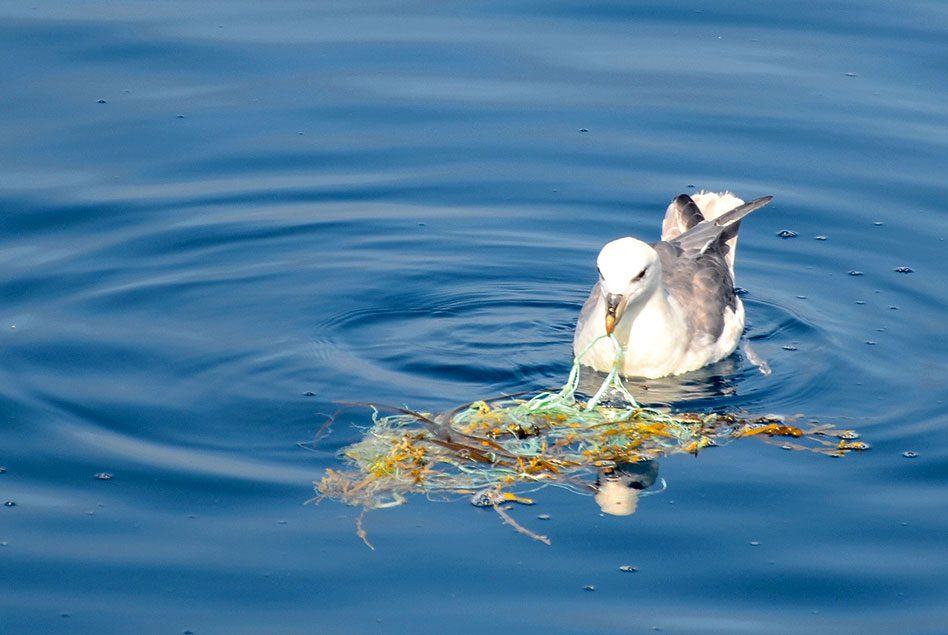
Since the mass production of plastics began around the mid-20th century, more than 8.3 billion metric tons of the stuff have been sent out into the world, with much of it ending up in the sea. In 2010 scientists determined that 8 million tons of plastic go into the ocean each year, a figure projected to increase tenfold by 2025.
Plastic items like toothbrushes and grocery bags get wave-beaten into smaller and smaller fragments, but the plastic substance itself can take upwards of 400 years to biodegrade. In the meantime, plastic debris is spreading to the farthest reaches of the ocean. The late 20th century saw the sobering discovery of so-called garbage patches in the center of the Pacific Ocean; now it’s an unpleasant surprise to find plastic fragments and fibers littering the Arctic.
“People think of the Arctic as this pristine place, but we find debris even in the most remote places,” said Peter Murphy, the Alaska regional coordinator of the NOAA Marine Debris Program. Ocean currents, Murphy said, act as a “conveyor belt” that transports plastics to the Arctic. Boats and migratory animals also carry in plastic debris, and microplastics can even become airborne and travel north by wind currents, falling in precipitation and becoming embedded in sea ice. With just a small proportion of its pollution coming from local sources, the sparsely populated Arctic is proving to be a sink for the rest of the world’s plastic.
Bearing that bad news is a bird—the Northern Fulmar, which has the dubious talent of being a natural plastic detector. Although its name comes from the Old Norse for foul gull, the fulmar is actually an open-ocean seabird related to petrels and shearwaters. (It earned the “foul” part of its name fair and square, by vomiting on would-be predators.) Its compact bill is topped with distinctive tube-shaped nostrils, useful for excreting salt from the seawater it drinks.
Those nostrils also lead the fulmar to its prey—small marine animals such as krill that it plucks from the sea surface. These little creatures tend to smell sulfurous, like the decomposing algae they feed on. Meanwhile, floating plastics get coated with algae as well and pick up the same scent. Concentrated in the top of the water column, the tasty-smelling plastic morsels are sniffed out and snagged by fulmars.
Fulmars eat so much plastic that the birds themselves can contribute to local pollution in the Arctic. As they deposit guano on the steep seaside cliffs where they breed, fulmars may be creating polluted halos of excreted microplastics around their breeding colonies—a sad spin on the natural role that seabirds typically play as nutrient cyclers that enrich nearshore ecosystems.
Larger plastics, on the other hand, accumulate at the base of a fulmar’s stomach, where they may remain until the bird dies—of other causes, often at a ripe old age of 40 years or more. The global population of Northern Fulmars is estimated at anywhere from 7 to 14 million birds and rising. These are birds that seem to survive plastic consumption. That’s lucky for them, and for the study of plastic pollution—because each fulmar carries in its belly a sample of the plastic levels within its own Arctic subregion.
Around the 1970s researchers started noticing bits of plastic in the stomachs of Northern Fulmars in locations around the circumpolar north. It was 2007 when a graduate student named Jennifer Provencher—studying the diets of fulmars and murres in Nunavut, Canada—encountered the same phenomenon and wanted to learn more. With a tip from her advisor, Provencher borrowed a protocol from western Europe, where researchers had already been monitoring plastics in fulmars for several decades. For the first time, she applied that protocol toward monitoring the Arctic.
Now Provencher works for the Canadian Wildlife Service, and for the past 12 years she and other seabird researchers around the Arctic have been examining fulmar stomachs for plastics wherever they find a carcass—Svalbard, Faroe Islands, Iceland, Nova Scotia, Labrador Sea, Baffin Bay, and Alaska. To date, they have dissected about 120 fulmars.
Some of those birds died naturally and washed ashore, or were caught accidentally in fishing nets (another major threat to seabirds worldwide). Others were gathered in indigenous hunts.
“These birds did not die because of their plastics,” Provencher said.
The plastic cargo may not harm the fulmars, but its presence indicates a widespread problem with pollution.
“We’ve never looked inside a group of Northern Fulmars from any location and found no plastics,” Provencher said. “That is really shocking when we think about how remote and far these birds are from major pollution sources.”
More than 800 wildlife species— including Arctic icons such as belugas and polar bears—are known to be contaminated with larger fragments of plastic, according to ecotoxicologist Chelsea Rochman of the University of Toronto. More than 220 species have been reported to eat microplastic.
Plastic is a magnet for compounds that repel water, so each fragment turns into a “little floating cocktail of chemicals,” Rochman said. For example, “every piece of plastic I’ve taken out of the ocean has DDT on it,” she said, despite the worldwide ban on DDT in effect since 2001.
The tiniest fragments—nanoplastics so small that they are invisible—are abundant in the Arctic region and can themselves be absorbed into cells, said Mary Gamberg, a research scientist who lives in the Yukon and specializes in studying contaminants in the Arctic.
“The impact of that on the animal or the person is not really known yet at this point, because we’re really only becoming aware of the existence of nanoplastics,” Gamberg said.
What’s certain is the toxicity of the chemicals associated with nanoplastics, such as PCBs, fluorinated compounds, waterproofing agents, firefighting foams, and phthalates.
“All of these things can get brought into the cells, and we know they’re toxic, so they will have an impact on the animals, absolutely,” Gamberg said.
Unfortunately, this is not the first time a contaminant from distant industrial sources has made its way to the Arctic, via currents and migratory animals, and infiltrated the local food chain. In the 1980s scientists found PCBs in the breast milk of Inuit mothers, a discovery that influenced some families to stop breastfeeding. In 2012, Canadian officials and researchers issued a mercury advisory for pregnant women in Nunavut about eating seal liver, a traditional practice. Now plastic is a source of alarm for people living in the Arctic. Gamberg is one of them.
“I feel outraged,” she said. “I live in the Arctic in this pristine environment. I feel outrage that we live in a global economy that encourages the use of plastics, particularly single-use plastics and particularly in undeveloped countries where few options exist. These plastics end up in the Arctic environment, in our animals and food.”

More than 220 species have been reported to eat microplastic. The tiniest fragments—nanoplastics so small that they are invisible—can be absorbed into cells. Photo by Jonathan Fiely/Cornell Lab Conservation Media. 
Microplastics extracted from a Northern Fulmar’s stomach. Photo by Jonathan Fiely/Cornell Lab Conservation Media.
The objects found in fulmar stomachs range from glowsticks and plastic BB gun pellets to bottle lids, condoms, and feminine hygiene wrappers— “things we use every single day,” said Provencher, the Canadian Wildlife Service seabird scientist.
Provencher has a trick for showing people the plastic patterns known from fulmars. She fills an array of plastic bags with varying amounts of plastic corresponding to those found in fulmars—but scaled up to human proportions. Then she has her audience match up the bags with their locations around the Arctic.
“I’ve done that with ambassadors, I’ve done that with ministers,” she said, noting that some of the plastic loads weigh as much as a large apple. “They can see how much plastic they would have in their stomachs, if they were the fulmar.”
Provencher and her colleagues have used the fulmar data to convince decision makers and policy leaders that “this is not a middle-of-the-ocean problem, this is a coastal problem, and this is an in-my-backyard problem,” she said. “That’s a real link that the fulmars have helped us make.”
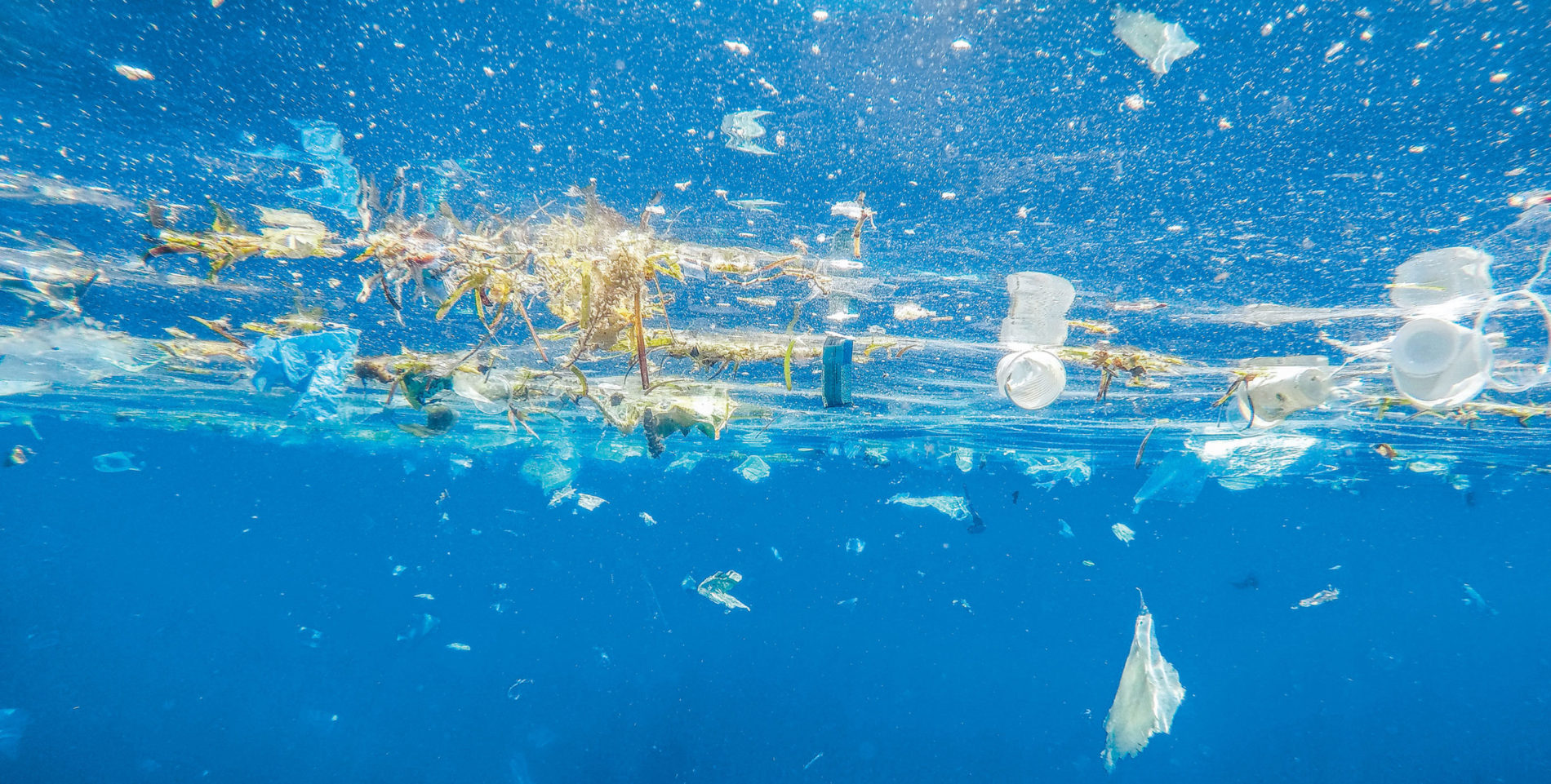
While plastic continues flowing into the ocean faster than ever, experts hold out hope that the tide of plastic pollution can turn. Offering optimism for the future are improvements in recycling technology and waste management, policy changes at local and national levels that reduce consumption of single-use plastics, and rising social pressure to reduce plastic production.
“The exciting thing about plastic pollution is this idea that we do have solutions,” Provencher said. “But in order to understand if the policies and solutions actually are working…we need to monitor along the way.”
Monitoring in the harsh conditions of the remote high Arctic—sampling water, air, sediment, or living things— tends to be neither easy nor cheap. But in the Northern Fulmar, researchers have found an extraordinarily cost-effective and labor-saving tool for plastics monitoring. Essentially, the fulmars are spreading out and sampling most of the circumpolar Arctic on scientists’ behalf. Each population covers its own region, roughly at the scale of an ocean basin. The birds donate their plastic samples to science at the end of their lives, when they wash up on shore or otherwise find their way into human hands.
“You don’t need a big ship or an expedition in order to collect those samples,” Provencher said.
The circumpolar monitoring effort includes not just the seabirds and scientists, but also indigenous harvesters, fishermen, and anybody else living in the Arctic who finds a dead fulmar.
“It actually is a great way to involve people on the ground in monitoring their own environment,” Provencher said.
But there’s still something missing: worldwide cooperation.
The seabird scientists monitoring fulmars around the Arctic are doing so opportunistically, without a program of agreed-upon standards to make all of the data comparable from place to place.
“To realize the full potential of how fulmars could be used as indicators of plastic pollution, there really needs to be a coordination amongst the Arctic countries,” Provencher said.
That means merging the efforts of Canadian, Alaskan, and northern European researchers with those of researchers in Russia, a country with shores that span Eurasia and make up about half of the world’s Arctic coastline. Scientists in all of those regions are eager to collaborate. With a shared protocol, they can establish a baseline record of plastic pollution all around the Arctic. Then they can prioritize the dangers of marine plastics by geographic region, and track how the patterns change over time.
“Only by working together can we actually understand…what the impacts are on the ecosystems, on the birds, and those communities that rely on healthy ecosystems for their long-term survival in the Arctic,” Provencher said.
To make this collaboration possible, Provencher and an international team of experts are developing a plan for monitoring marine plastics around the circumpolar north, with the Northern Fulmar as the crown jewel of indicator species. The team is part of the Arctic Monitoring and Assessment Programme under the Arctic Council, an intergovernmental forum that includes representatives from Canada, the United States, Russia, Sweden, Finland, Norway, Denmark, and Iceland. In April 2020 these experts were scheduled to present preliminary sections of their plan at the first International Symposium on Plastics in the Arctic and Sub-Arctic, hosted in Iceland. (The meeting was rescheduled for September 2020 because of the coronavirus pandemic.)
“Coordinated monitoring among all the Arctic states not only changes policy in the Arctic, but it’s also a very important feed into other international processes,” said scientist Rolf Rødven of Norway, who serves as executive secretary for the Arctic Monitoring and Assessment Programme. In the past such Arctic monitoring influenced international treaties like the Minamata Convention on Mercury of 2013 and the Stockholm Convention on Persistent Organic Pollutants of 2001.
“We could see the monitoring in the Arctic really affecting the way policy is made about plastics for the rest of the world,” Rødven said.
Meanwhile, seabird researchers are expanding their plastics monitoring concept to the Southern Hemisphere, but they will need a new indicator species south of the equator. The candidates (a few common, widespread shearwater species lead the pack so far) will be discussed at the World Seabird Conference in Tasmania in October 2020—during a workshop aptly named “Beyond the Fulmar.”
People, wildlife, and ecosystems affected by plastic pollution all over the planet may soon owe a lot to a certain scrappy seabird from the north.
“On a global stage, at this moment in time, we have both the public attention and policymakers’ attention,” Provencher said. “The fulmars are really how we’ve been able to get to this point, where we’re upping our game.”
Abby McBride is a sketch biologist and science writer from Maine. As a Fulbright–National Geographic Storytelling Fellow, she recently spent a year traveling around New Zealand to sketch seabirds and write stories about seabird conservation.

All About Birds
is a free resource
Available for everyone,
funded by donors like you
American Kestrel by Blair Dudeck / Macaulay Library
